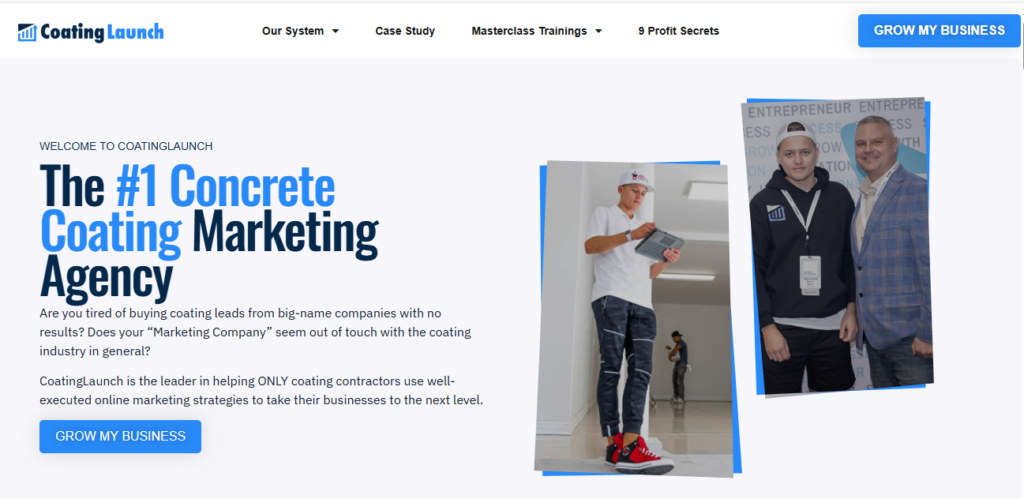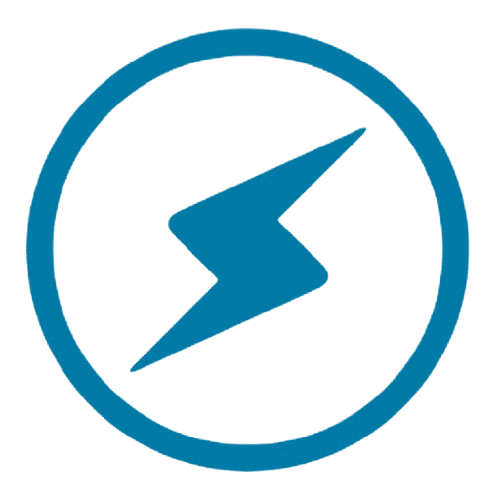
Marko Sipilä recently shared his journey and insights into growing and scaling a concrete coating business on the Painter Growth podcast. In the interview, Marko discussed his transition from launching his own marketing agency in high school to his impactful tenure at Service Legends.
After realizing that the agency model wasn’t right for him, he pivoted to the concrete coating industry, where he focused on building strong systems and assembling the right team for growth.
Marko demonstrated a strong entrepreneurial spirit since high school. His experience as Chief Marketing Officer at Service Legends was pivotal in shaping his approach to business. At 21, Marko learned that real growth comes not from constant hustle, but from having the right systems and a reliable team.

Marko emphasizes the importance of consistency and focus over short-term grinding. He often refers to Andy Frisella’s idea that sustained effort is more effective in the long run. This mindset led him to leave Service Legends, which he describes as a ‘business divorce.’ Though there were lessons to be learned along the way, Marko has no regrets. His departure opened the door to new opportunities, and his insights continue to help home service businesses, especially in the painting and concrete coating industries.
This article captures key takeaways from Marko’s journey, offering invaluable advice for entrepreneurs and business leaders on building a strong foundation in marketing, sales, and operations for sustainable growth.
After his exit, Marko launched CoatingLaunch, a business focused on the concrete coating industry. While this market is smaller than painting, it has strong growth potential for businesses that use the right strategies. Coating Launch helps business owners improve their marketing to achieve steady, scalable growth.

Marko says scaling a home service business to seven figures requires mastering four key areas: marketing, administration, production, and sales. Each area needs to work well for the business to succeed long term. Coating Launch provides the tools and knowledge to help businesses excel in these areas.
Marko’s journey, as shared on the Painter Growth podcast, shows the importance of adaptability, strategic thinking, and building effective systems. For anyone in the home service industry, his insights offer a clear path to growth and success.
Avoiding Pitfalls and Scaling in the Concrete Coating Industry
Marko highlights a major pitfall for businesses: over-reliance on a single lead source, like a marketing agency. Losing that source can cripple operations. Instead, he recommends an omnichannel strategy, combining online and offline efforts—such as mailers, door hangers, and community outreach—to ensure consistent visibility and reduce dependency on any one channel.
Marko has worked with many concrete coating companies and breaks down their growth stages:
Beginner Phase (0 to 20K/month):
- Challenges: Low revenue, owners often don’t pay themselves, and operations are still being figured out.
- Key Issue: Client acquisition. Many businesses struggle to get enough clients, leaving their phones silent and their schedules empty. This is similar to launching a podcast—it takes time to build an audience.
Production and Scaling:
A typical concrete coating crew consists of two people. An owner/operator might have one helper, and most businesses in the 10K to 20K range operate with a single crew.
With one crew, revenue caps at around 30K to 60K per month, assuming five jobs per week at 450 square feet per job.
If the owner handles both sales and production, 30K is a realistic monthly cap. Scaling beyond this requires adding a second crew or managing sales and admin while maintaining two people per crew, pushing potential earnings closer to $60K per month.
Comparison to Painting:
In painting, one painter generates around 12K to 15K monthly, while a two-person crew can bring in 24K to 30K.
Concrete coating offers faster scalability. A $3,000 coating job can be completed in one day with two people, whereas a painting job of similar value might take multiple days.
Many painters are moving into concrete coating due to its lower barrier to entry and growing demand. DIYers often attempt garage floor coatings but usually fail due to a lack of expertise. Marko recommends hiring professionals for quality results.
Many painters claim they don’t need help because they’re booked out for months. However, being booked out doesn’t mean the business is running efficiently—it often means just getting by. True growth comes from refining systems, not just having a full schedule.
Challenges and Growth Potential in the Concrete Coating Industry
New concrete coating businesses often struggle with client acquisition. To grow, they need consistent leads and visibility.
For businesses earning 10Kto10Kto20K monthly, production usually involves a single crew of one or two people, capping revenue at around 30K. To scale, adding a second crew or focusing on sales and administration is necessary, aiming for 30K. To scale, adding a second crew or focusing on sales and administration is necessary, aiming for 30K to $60K monthly.
Concrete coating is faster and more scalable than painting. A $3,000 job can be completed in one day with two people, while painting takes longer. This efficiency attracts painters to the industry, though DIYers often fail—hiring professionals is key.
Scaling requires more than just booking jobs. Handling sales alone limits growth to 30K monthly with one crew. Adding a second crew or splitting roles can push revenue to 30K monthly with one crew. Adding a second crew or splitting roles can push revenue to 60K. One-day coating systems offer an advantage over slower two-day systems.
The market is growing, with job prices ranging from 500 to 8,000. To succeed, businesses must differentiate themselves and focus on stabilizing operations and refining processes as they scale.
Transitioning to Level Two: Scaling Your Business Effectively
Moving from Level One to Level Two requires shifting from hands-on work to leadership. Success at this stage depends on refining financial strategies, optimizing operations, and ensuring consistent service quality. Scaling isn’t just about growth—it’s about sustainable, profitable expansion.
Key Steps for Growth
- Generate Quality Leads: Build a reliable system through marketing agencies, ads, or direct outreach. Track conversion rates—Google leads often convert better than Facebook leads, which require more nurturing.
- Optimize Pricing & Margins: Increase rates as experience and brand value grow.
- Strategic Hiring: Bringing in a crew member, office manager, or salesperson frees time for scaling.
- Standardize Operations: Streamline quoting, customer service, and workflows to improve efficiency.
- Expand Marketing: Test new strategies like SEO, social media, and TV ads to sustain demand.
- Retain Clients & Maximize Referrals: Strengthen relationships through excellent service and follow-ups.
- Scale Production & Training: Hire more crews and improve training as demand increases.
- Track Key Metrics: Monitor lead costs, closing rates, customer lifetime value, and profit margins to guide decisions.
The “Bucket with Holes” Problem
Many businesses at Level Two generate leads but struggle to convert them. If leads aren’t closing, it’s like pouring money into a bucket with holes.
Common Challenges & Fixes:
- Inconsistent Follow-up: Leads slip through when responses are slow. Aim to follow up within 30 minutes to an hour, especially with high-intent leads.
- Inefficient Sales Process: A smooth, repeatable process is key. Set expectations, build trust quickly, and align your service with customer needs.
- Lack of Differentiation: In competitive industries like concrete coating or painting, clearly communicate why your service is superior. If your value isn’t clear, leads will go elsewhere.
- Not Tracking Sales Metrics: Without tracking lead performance (Google vs. Facebook, for example), you’re operating blind. A CRM or spreadsheet helps refine efforts.
- Weak Closing Rates: A strong lead pipeline means little if you can’t close sales. Optimize the entire funnel, from lead capture to final sale.
Client-Financed Acquisition: A Smart Growth Strategy
Using customer deposits to fund marketing and operations allows businesses to scale without relying on loans. For example, in concrete coatings, a 50% deposit on a $5,000 job provides $2,500 upfront, which can be reinvested into lead generation and operational growth.
Key Considerations:
- Manage Cash Flow Carefully: Growth should align with service capacity—mismanagement leads to strain.
- Maintain Quality & Trust: Deliver top-tier service to justify upfront payments.
- Reinvest Wisely: Allocate funds strategically across marketing, labor, and operations.
- Stay Transparent: Clearly communicate deposit structures to build credibility.
- Scale Responsibly: Expanding too fast without proper systems leads to operational failures.
Common Pitfalls When Scaling
- Overestimating Growth: Avoid over-hiring or making large equipment purchases before demand justifies it.
- Poor Cash Flow Management: Mismanaging materials, labor, and marketing budgets can disrupt scaling efforts.
- Lack of Systems: Efficient sales, operations, and customer service systems (such as a strong CRM and automated workflows) are essential.
- Inefficient Marketing Spend: Throwing money at untested strategies leads to waste. Data-driven marketing ensures better returns.
- Failure to Delegate: Scaling requires trusting a team. Holding onto every responsibility slows growth.
- Inconsistent Quality Control: As multiple crews operate, training and quality checks are crucial.
- Not Tracking Key Metrics: Revenue alone isn’t enough—monitor costs, efficiency, and profitability to make informed decisions.
By addressing these challenges, businesses move beyond the startup phase into a scalable, predictable model for long-term success.
Optimizing Lead Conversion & Sales Closing Rates
To scale efficiently, businesses must refine their sales funnel to ensure marketing efforts convert into actual customers. Optimizing both lead conversion rates and closing rates prevents wasted marketing spend and maximizes profitability.
Key Optimization Strategies:
Prioritize High-Intent Leads: Google and referrals convert better because prospects are actively seeking solutions. Facebook or Angie’s List generate more leads but often lower-quality prospects.
Streamline Lead Handling: A structured sales process, strong follow-up system, and trained team improve conversion. Use optimized scripts and refine them continuously.
Review & Adjust: If targeting a 60% conversion rate, analyze each stage—first contact, follow-ups, and appointment setting—to plug inefficiencies. Many businesses focus on more leads without improving conversion, leading to wasted marketing dollars.
Balance Closing Rates: A 40% closing rate in industries like concrete coatings signals strong qualification and pricing. A 90% rate might indicate weak qualification or underpricing, which can be unsustainable.
Scaling Beyond $50K Monthly Revenue
At $50K per month, if the owner is still in production, shifting to an admin or sales role is key. Hire a production lead or sales rep based on personal strengths—whether in operations or sales.
From $20K to $80K per month, growth requires a team. At $80K per month, adding appointment setters or part-time admin support improves efficiency without overstaffing. Quality hiring ensures strong performance in key roles.
Reaching $100K+ Monthly Revenue
Optimize Routing & Staffing: Two crews can generate $50K/month each, but an appointment setter, production manager, or salesperson becomes necessary as revenue grows.
Transition from Owner-Operated to Scalable Business: At six figures, the owner should shift to strategic growth while a dedicated team executes operations.
Maintain a Strong Lead Pipeline: With an average job size of $3,500, reaching $100K/month requires about 30 jobs, which means securing 100 leads monthly. Consistent lead flow, effective marketing, and localized online presence drive sustainable success.
By fine-tuning conversion rates, optimizing team structure, and maintaining a steady lead pipeline, businesses can scale efficiently while maximizing profitability.

Maximizing Growth in the Concrete Coatings Industry
Scaling from $1M to $10M requires shifting focus from growth to operational efficiency and team structure. What worked to reach $1M won’t necessarily scale further, making diversification essential.
Marketing Strategies by Growth Stage:
- Under $1M Revenue:
- Focus on cost-effective lead generation, primarily Facebook ads with before-and-after visuals.
- Allocate 80% of the marketing budget to Facebook ads, ensuring a steady lead flow.
- Use low-cost local marketing (neighborhood outreach, door hangers) instead of overspending on ads.
- Beyond $1M Revenue:
- Diversify into Google Ads, SEO, trade shows, and traditional marketing while keeping Facebook ads as a primary source.
- Allocate 10% of revenue to marketing, testing new channels without overcommitting.
- Optimize cost per lead ($40), appointment booking ($80–$120), and customer acquisition cost ($300) to maintain profitability.
Increasing Customer Lifetime Value (CLV)
Since coatings often come with lifetime warranties, repeat business is rare, making upselling and cross-selling essential. Sales reps should offer:
- Additional coatings for patios, basements, or garages.
- Similar strategies from the painting industry, where expanding job scope boosts revenue without acquiring new customers.
By optimizing marketing spend, diversifying lead sources, and maximizing job value, concrete coatings businesses can scale efficiently and sustain profitability.
Pro Tip for Businesses Earning $20K–$80K Per Month: To scale to seven figures, focus on exceptional service—happy customers drive referrals, the most cost-effective marketing. A 90+ Net Promoter Score signals strong word-of-mouth growth.
As Alex Mekowsaki said, “A mediocre product requires constant marketing, but an exceptional one markets itself.” Quality service ensures sustainability, as seen with high-referral businesses like Gym Launch.
How to Add Epoxy and Concrete Coating Services to a Painting Business:
Marko explained that if someone in the painting business wants to add epoxy and concrete coating services, they should follow a specific approach:
- Assess the Market: Understand the demand for concrete coatings in your area. If demand is high, adding this service can be highly profitable.
- Invest in Training and Equipment: Ensure that your team receives proper training in concrete coatings, which may require learning new materials and techniques. Additionally, invest in the right equipment.
- Leverage Existing Customer Base: Start by offering concrete coatings to your current customers. This approach allows you to showcase the added value of the service and gain referrals from existing clients.
- Market Strategically: Begin with neighborhood marketing and door hangers, which are low-cost strategies that can effectively attract customers. As you gain experience, expand your marketing efforts.
By adding concrete coatings to a painting business, owners can tap into a growing market, increase revenue per project, and create new opportunities for customer engagement.

Key Roles for Scaling Your Team
- Hire a dedicated salesperson to close deals, allowing you to focus on strategic initiatives. This role ensures only promising leads reach the sales rep, saving time and resources.
- A project manager ensures that projects stay on track, meet deadlines, and remain within budget. This role is vital for scaling without constant micromanagement.
- Virtual assistants or admin staff can handle tasks like scheduling, invoicing, client follow-ups, and managing communications. This helps keep everything organized as administrative duties increase with growth.
- Marketing Support manages digital campaigns (Facebook ads, Google ads), analyzes data, and refines strategies. They also assist with content creation (e.g., before-and-after posts, and client testimonials).
- A bookkeeper or outsourced accounting service is crucial for managing finances, including tracking revenue, expenses, payroll, and tax preparation.
- A client success manager ensures client expectations are met, handles complaints, and promotes customer satisfaction, driving referrals and repeat business.
- As you scale, you may need an HR professional or recruitment specialist to handle hiring, onboarding, and ensuring cultural fit.
Critical Team for Scaling to Six Figures
Two Crews (Four Technicians + Yourself): Two crews increase capacity and help you scale toward $80K-$100K per month.
Full-Time Appointment Setter/Lead Qualifier: A dedicated lead manager lets you focus on closing deals and business strategy.
Production Manager (Optional): For more complex operations, a production manager handles job scheduling, crew performance, and client satisfaction.
Scaling your concrete coatings business requires a strong team and an optimized lead generation strategy. Hiring the right people and focusing on high-impact marketing allows you to delegate tasks, streamline operations, and shift from working in the business to working on it—driving sustainable growth beyond $100K/month.
Ready to Scale Your Concrete Coatings Business? Start by optimizing your marketing strategy and building the right team today.
